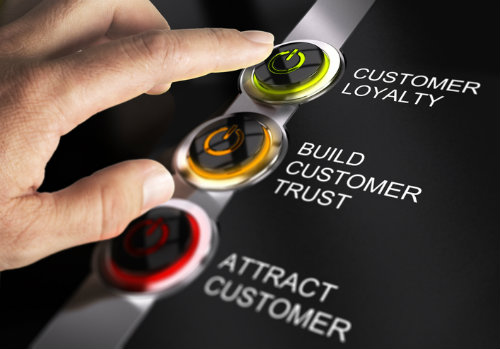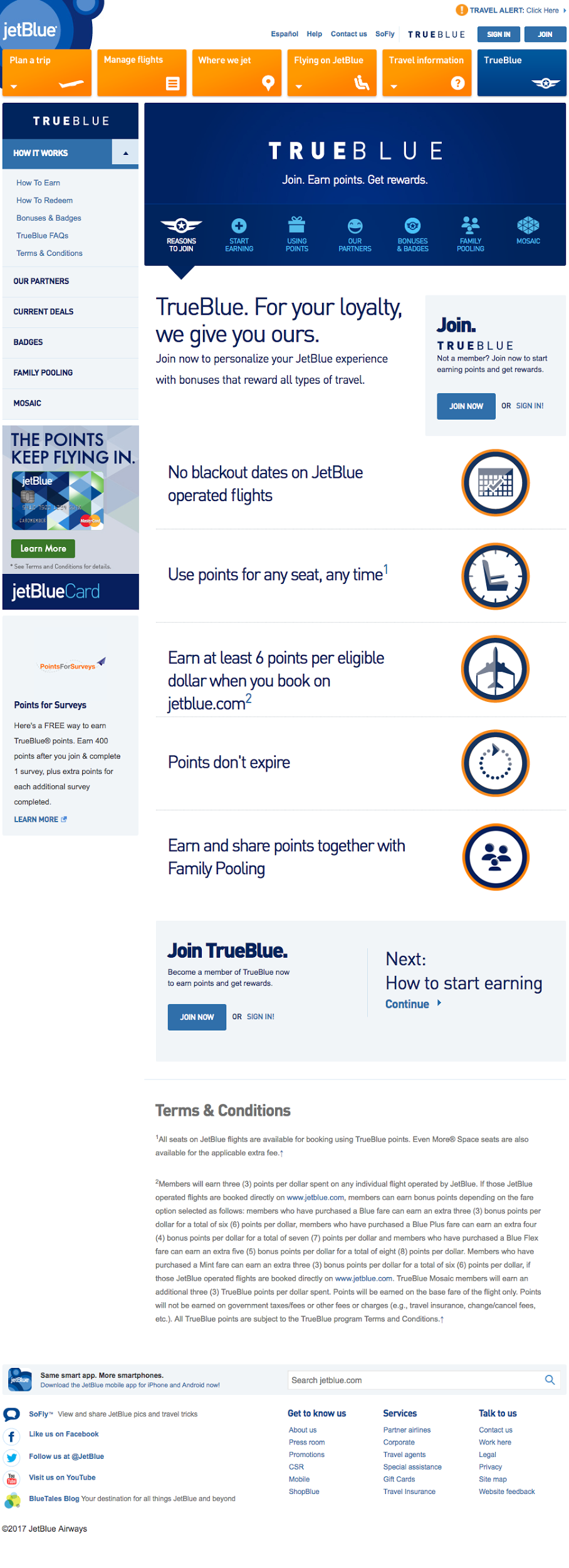 Who doesn’t love feeling like a VIP? I know I do. I might never be a celebrity, but when Uber sends me a promo code for two free trips to the airport or Halsted Street Deli offers me a 99-cent bagel with cream cheese, I can’t help but feel a little special.
Who doesn’t love feeling like a VIP? I know I do. I might never be a celebrity, but when Uber sends me a promo code for two free trips to the airport or Halsted Street Deli offers me a 99-cent bagel with cream cheese, I can’t help but feel a little special.
Customer loyalty programs with custom perks like these are a great way to show your customers you care about them and are dedicated to giving them a positive experience.
In a previous article, we discussed some of the bigger benefits of building a customer loyalty program. If you need a quick refresher, here are a handful of the takeaways:
- Loyalty programs allow brands to connect with all types of customers – website visitors, app users and in-store shoppers
- Loyalty programs are cost-effective: Acquiring a new customer is seven times more expensive than retaining a current one
- Loyalty programs help brands stand out and give them advantages over competitors that do not offer loyalty programs
Here are three brands with truly great customer loyalty programs. (Feel free to steal some of their ideas.)
1. Beauty Insider (Sephora)

Sephora’s loyalty program, Beauty Insider, offers everything a cosmetics addict could want in a beauty membership. It’s free to join, and each dollar spent accrues points that earn members free beauty supplies.
The loyalty program has three reward tiers, and the perks increase in value as the consumer spends more on Sephora products.
- Customers in the lowest tier aren’t required to purchase anything from Sephora but still receive a free birthday gift and free beauty classes.
- Beauty Insiders who spend $350 or more on Sephora products in a calendar year become a VIB or Very Important Beauty Insider. In addition to a free birthday gift and free beauty classes, VIBs receive seasonal savings, personalized gifts and a free custom makeover.
- Consumers who spend over $1,000 on Sephora products are part of the elite VIB Rouge group and receive the same perks the VIBs do but also have access to a private concierge hotline, unlimited custom makeovers and invitations to exclusive events.
Sephora’s loyalty program is a perfect example of taking a psychological approach to marketing. Beauty Insider is focused on exclusivity and plays on the need of consumers to feel as if they’re part of an elite group to which not everyone has access. To drive home this point, the tagline for the VIB Rouge group is, “See the view from the top.”
The program also capitalizes on FOMO, or Fear of Missing Out. The site makes sure shoppers in lower tiers can see what benefits they could be receiving if they just spent a little more on beauty products.
2. Co-op Membership (REI)

On its company overview page, REI proclaims, “REI is … dedicated to inspiring, educating and outfitting its members and the community for a lifetime of outdoor adventure and stewardship.” And its loyalty program embodies this goal.
Because REI is a co-op organization, it takes a slightly different approach to its customer loyalty program than the other two brands on this list. In addition to offering relatively standard benefits such as …
- Access to the in-store REI garage sale (which offers huge savings opportunities up to 50 percent or more)
- Easier and faster returns and exchanges
- Exclusive discounts
- Special pricing on classes, equipment rentals and store services
… REI also offers those enrolled in the co-op membership program a voice in company-wide decisions by attending the annual member meeting and voting for the co-op’s board of directors. Additionally, each spring, members of the co-op receive a 10 percent member refund that represents their share of annual profits. The more each member spends, the more everybody wins.
REI is not just offering its customers the opportunity to spend money and earn redeemable points. Instead, for $20, co-op members become a part of a group that is united by a passion for the outdoors and environmental stewardship.
3. TrueBlue (JetBlue)

At its core, TrueBlue by JetBlue is a pretty typical airline rewards program. Members earn points for the dollars they spend on JetBlue travel, which they can redeem for discounted flights and other perks.
Where TrueBlue takes it to a new level is with extra features they’ve been adding since its launch 15 years ago.
- 2006: JetBlue announces “Continuously Extending” TrueBlue points for members who use the JetBlue Card from American Express. This feature enables cardmembers to automatically extend the life of their TrueBlue points by 12 months by spending at least $200 on their JetBlue Card or by using their JetBlue Card to purchase travel on JetBlue before current points expire.
- 2012: JetBlue launches TrueBlue Mosaic, a program that rewards the most loyal customers with waived cancellation fees, early boarding, access to a dedicated customer service line and complimentary in-flight alcoholic beverages.
- 2013: JetBlue introduces Family Pooling, which allows families to combine their existing TrueBlue points into a shared account, contribute future TrueBlue points to that account and share their points with family members.
Keep in mind: The loyalty programs above didn’t become success stories overnight. Programs take time to gain traction and require extensive consumer data collection and analysis. But once you’ve armed yourself with data about your target audiences, you can adjust your loyalty program offerings and make participation irresistible to customers.
Get the real-time data you need to build a loyalty program every consumer will want to join. Learn more about Active Customer Intelligence now.
 Affiliate Marketing
Affiliate Marketing Automotive
Automotive eCommerce and Retail
eCommerce and Retail FinTech
FinTech LeadGen
LeadGen Nonprofit and Political
Nonprofit and Political Payments
Payments Technology Platforms
Technology Platforms Tourism and Hospitality
Tourism and Hospitality
 Who doesn’t love feeling like a VIP? I know I do. I might never be a celebrity, but when Uber sends me a promo code for two free trips to the airport or Halsted Street Deli offers me a 99-cent bagel with cream cheese, I can’t help but feel a little special.
Who doesn’t love feeling like a VIP? I know I do. I might never be a celebrity, but when Uber sends me a promo code for two free trips to the airport or Halsted Street Deli offers me a 99-cent bagel with cream cheese, I can’t help but feel a little special.


